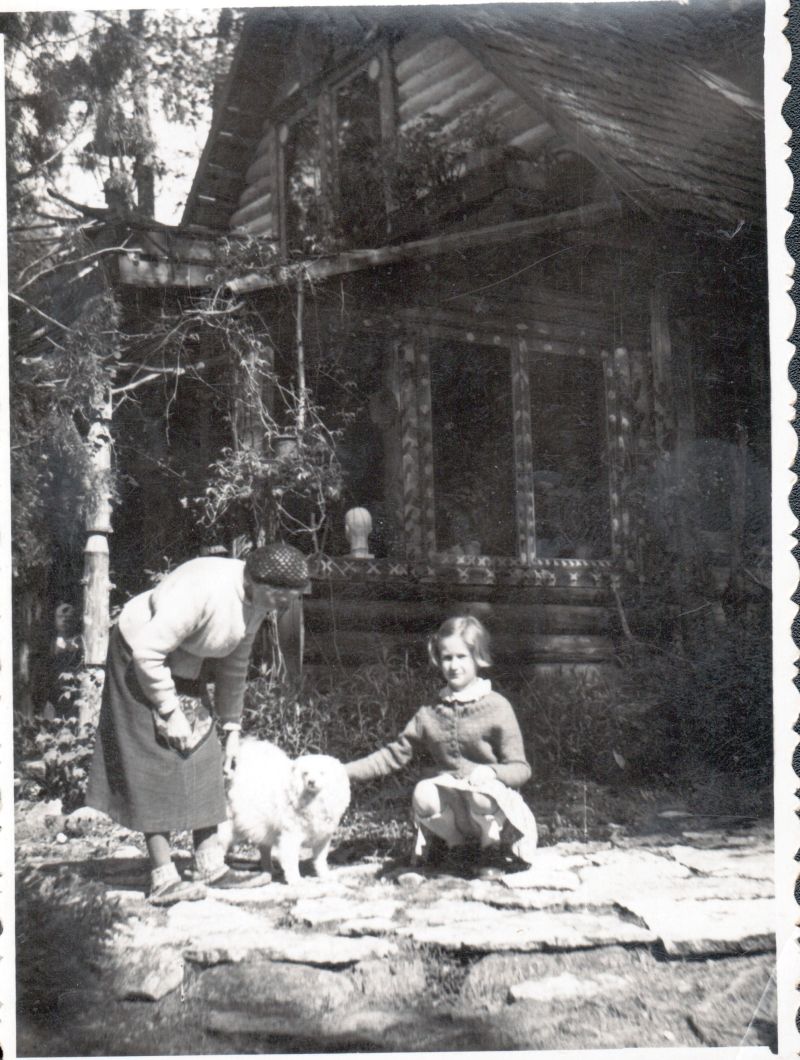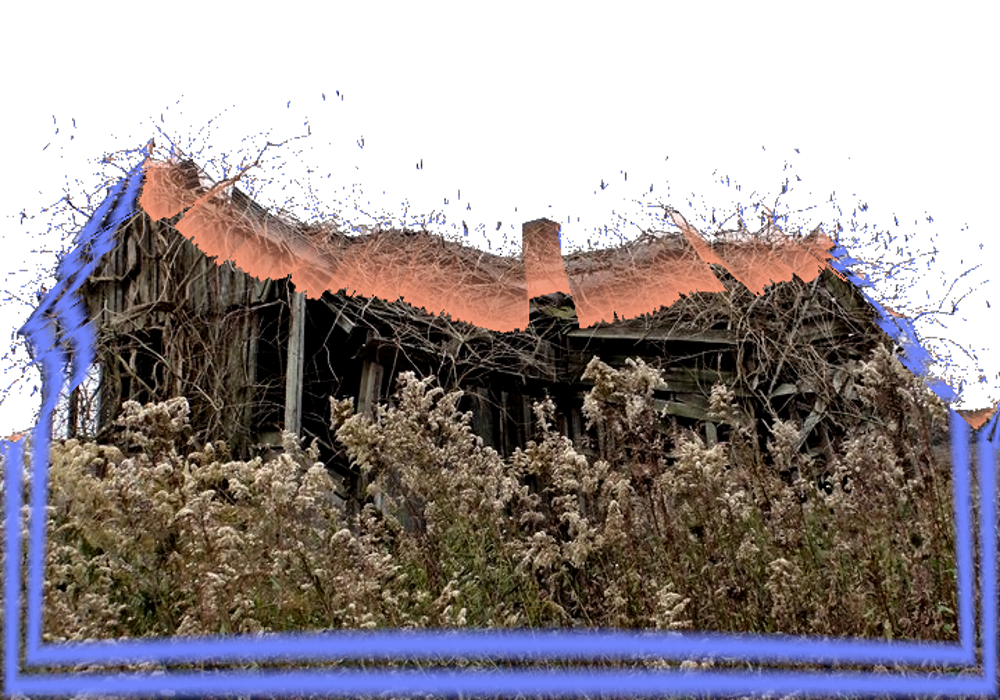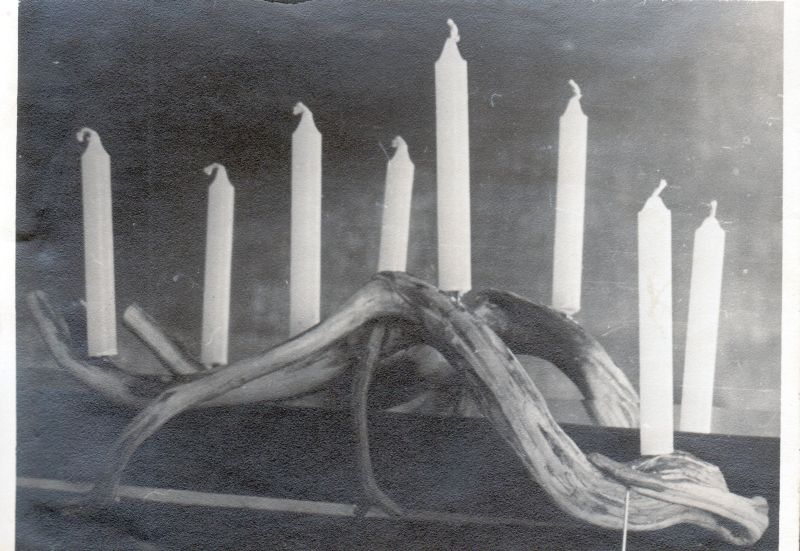Making sense of a past, present or future life is a daunting task, be it our own or somebody else’s. We want to see a life reflected back in the world, in others, in ideas. Also, a concept: theory as self-help. But what kind of theory: lives are messy? Not sure yet, but somewhere in this mess of life, art, ideas, play, rejection and resilience is where WeirdWomen are.
***
What if we kissed … at the intersection of art and life, you ask? And I say: This is the only place I ever, but also never, want to be kissed at.
***
Say you are an artist and designer by education, you exhibit and publish your work in magazines, and work as an art teacher throughout your life. You are also a textile and craft artist, a traveller, a polyglot, an advocate for women’s crafts, and a gardener. You were born at the end of the 19th century, survive two world wars, find yourself living in the Soviet Union after the second one, stop exhibiting publicly, and dedicate yourself to teaching; you direct your creativity towards your house, your garden, your life. Say you are Vanda Juhansoo.[1]
So, you are Vanda Juhansoo, and you have a life, you have a house, you have a garden. You live like nobody else, you look like nobody else: you travel regularly, build your house, look after your garden, make your own clothes, paint your furniture. Sometimes you are known as the Witch of Valgemetsa, the village you live in.

Vanda Juhansoo in front of her house. Photo: Karilatsi Open Air Museum
***
Sometimes WeirdWomen have houses that almost seem part of them. They live in a house, they live in a castle, in fact, they have always lived in a castle. WeirdWomen are witches and ladies who, like Shirley Jackson’s Merricat and Constance, stay with the house, in the house, even after it has been looted and burned down. But still: You can’t go on those steps, the children warned each other; if you do, the ladies will get you.[2]
But who are the ladies, you ask? By circumstance, anyone really. The ladies who have lived together on a remote farm for 40 years and are, like, just really good friends. The sisters who manage to return to their home country after being deported by the Soviet state, and live together for the rest of their life. The artist who, just, you know, doesn’t really quite get it, but doesn’t seem to notice or care. The coolest person you know, the one who always gets weird looks on the street, and you don’t really have the guts to approach right now, but who you are sure will be your best friend in no time.
A contemporary on Vanda Juhansoo: Everything came naturally to her. She did what she thought was right. Vanda was the lady of Musta manor. Locals only called her lady or Vanda.
Certainly, not all WeirdWomen are out to get you; in fact, they probably rarely are. But they have their castle.
***
Their home is their castle, their work is their castle. History gets written, names indexed, a canon drafted, but the castle holds. So, where do WeirdWomen stay, shut in or shut out?
Audrey Wollen: Every time you slice into the canon, girls rush out like ghosts.[3]
Remember, you are still Vanda Juhansoo; but now time has passed, and you are no longer alive. Most of your work has disappeared: you have been buried, your house is home to new people, your garden has grown into a forest, most of your work, textiles, painted and crafted objects, has been absorbed into the flow of time. There’s not much physical evidence left of your work, and the canon has started crystallising, leaving you just a little outside its bounds.
Audrey Wollen again: To write about them is an experiment in decentralized focus, fragmentation, spacious affection, floating hearsay, non-linear girl-history. It takes a tiny inkling of a tiny person in the vast cavern of history and tries to pull the plug on their aura of singular, masculine genius. I can only offer a method, and it isn’t even mine. Can the past one hundred years be written through the lives of the wives, girlfriends, mothers, daughters, workers, and spinsters? How different is the 20th century then? The 21st? [4]
***
So, what is left for WeirdWomen, dead or alive, until someone goes, knife in hand, to confront the canon? How to latch on to the fleeting ghosts, including our own, eyes wide with the desire to see ourselves reflected in theory?
Maybe what I really mean by theory is trash-theory, theory-adjacent thinking, theory as self-help, manifestos, theory-curious, theory that hits different.
Theory that hits you, like So I’ve already said that translating this book made me sick. I mean, it gave me migraines, made me puke; I couldn’t sleep at night, regressed into totally out-of-character sexual behavior. The way I’ve put it to my friends is that working on it was like being made to vomit up my first two books, eat the vomit, vomit again, etc., then pour the mess into ice trays and freeze it, and then pour liquor over the cubes …[5] This was Ariana Reines translating ‘Theory of the Young-Girl’ about a decade ago.
So promising in its sweeping chaotic energy; but also clearly present: the violence of theory; and my mother looking at the book, looking at me, looking back at the book, and saying: they really hate women, don’t they? The Young-Girl is obviously not a gendered concept,[6] neither is WeirdWomen, but it doesn’t really matter, because in 2020 we know that everyone is female, and everyone hates it.[7]
Where to go from there; maybe somewhere where we can mess around with things like coke theory and weed theory and molly theory and whatever; these particular ideas were sketched out by Grace Lavery. Dividing theorists into these categories, based on their vibe, is admittedly nothing but a parlour game, moving things around aimlessly on a table,[8] but it still feels immediate, like living. Urgent!! Take it, run your mouth and be gone!
But I think there’s a need for something kinder to fall back on, to perfect the art of refusal, to master the theory of failure. So I’m going to go and get that thing (don’t worry, I know where to look), or maybe even see you there? Until then, I’m leaving you, reader, probably frustrated, screaming into the void: ‘But what is WeirdWomen then?? Where’s their theory?? Explain it to me now or I’ll beat you!!’ But I won’t because: 1) I don’t know either; 2) I’m already gone.

Vanda Juhansoo’s watercolours of her garden. Photo: Hedi Jaansoo; Estonian Museum of Applied Art and Design

Image by Ando Naulainen
[1] Everything here regarding Vanda Juhansoo is sourced from ‘Vanda Juhansoo. Artist or Eccentric Woman?’, an exhibition at the Estonian Museum of Applied Art and Design (17 January – 8 March 2020), curated by Andreas Kalkun and Rebeka Põldsam.
[2] Shirley Jackson. We have always lived in the castle (1962). New York: Penguin Books, 2006, p 146
[3] Audrey Wollen. Secret Canon. Affidavit.art: https://www.affidavit.art/articles/secret-canon
[4] Ibid.
[5] Ariana Reines. Translator’s Note. Triple Canopy: https://www.canopycanopycanopy.com/issues/16/contents/preliminary_materials_for_a_theory_of_the_young_girl
[6] Tiqqun. Preliminary Materials For a Theory of the Young-Girl. Los Angeles: Semiotext(e), 2012, p 14
[7] Andrea Long Chu. Females. New York: Verso Books, 2019
[8] Grace Lavery. Coke Theory/Weed Theory, and Some Possible Alternatives. Substack: https://grace.substack.com/p/coke-theoryweed-theory-and-some-possible






























